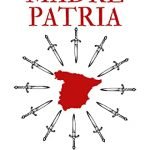
Contents
Where did the Filibusters of the Caribbean live?
They settled where they had a strategic position, on islands in the Caribbean, in the routes. Protected by the English or French, Tortuga Island or Nassau Island.
Located on routes full of ships with riches.
Refuges and nests of Pirates in the Caribbean Sea, with a multitude of islands where to hide. Many of them practically uninhabited and not used to be visited by Europeans.
A ship in the immense sea at the mercy of the elements and the pirates.
Their light and fast boats gave them their name.
Their most famous nests
The islands of Tortuga and Nassau

The main islands of the Caribbean Sea, through which all maritime traffic between America and Europe passed.
The first Spanish colonies were in the Caribbean Islands and around this sea. And they concentrated their wealth on their coasts.
Tortuga Island and the island of Jamaica
Large filibuster nests
Possibly the word comes from Freebootes, name of a light ship of Dutch origin, with great seafaring qualities, slender, lightweight and fast, which reached great speed. Ideal to be able to place itself soon next to any heavy merchant ship loaded with valuable merchandise or treasures.
The islands of the Filibusters in the Caribbean at the beginning were the Tortuga Islands and Jamaica, due to their strategic position near the Island of Hispaniola (today Santo Domingo + Haiti).
And why were the Filibusters there?
They settled on islands close to the Spanish possessions in the Caribbean Sea. Places from where they could easily access the routes followed by the galleons loaded with riches.
Tortuga Island and the island of Jamaica soon became famous. One under the protection of France, the other of England. There they had everything they could need for their ships and amusements.
The Brothers’ Guild
On Turtle Island
In the Confraternity of the Brothers of the Coast, they did not care about the country of origin, nor religion, nor skin color. And they all lived in places that were real nests of pirates. There were thousands of pirates
With beginnings already in the year 1620, they were empowered in the Turtle Island. They had simple but strict rules and a code of honor.
It did not matter the origin of the person, nor his religion, nor his color. People of all countries, all religions and all colors lived together. Freedom for everyone. Everyone could do what he wanted with his life, the confraternity stayed out of it. Private life was respected, and one could leave piracy if one wanted to.
No property. They divided the booty among all, not having individually more than the basic personal things and their share of the booty. Ships and land were owned by all. Expeditions were organized continuously. No one could own land on the island. There was no private property.
No European women were allowed on the island. Some believe because of the great amount of problems and arguments they caused among them. They only admitted indigenous women and slaves.
Each one was twinned with a companion, whom he defended in combat. And if one of them died, the other inherited his personal belongings. If he abandoned him in combat, the brotherhood would hang him.
Expansion in the Caribbean
From island to island. Fleeing from the Spaniards, they took refuge in other islands.
In 1630, a new expulsion from Tortuga Island caused them to scatter to other islands such as Montserrat, Guadeloupe, Martinique, Antigua, St. Barthelemy, Aruba, Barbados, etc.
In the year 1639, when Spain abandoned Tortuga Island, they returned to it, occupied by the French Crown, and under its protection it again became a refuge for pirates.
In the year 1655 Jamaica passed to the English, and with the support of England, it also became a nest of Buccaneers, Filibusters, Corsairs and Pirates.
Escaped slaves, criminals, persecuted, join them. They can move freely through the French, English and Dutch colonies.
They were supported by France
It used them as privateers in its service to confront Spain.
France covets the riches and sends its corsairs. France lent its support and made use of privateers, buccaneers and filibusters. Thanks to them, it enriched and weakened Spain in America. The Spanish Crown was forced to strengthen its naval presence and fortify its colonies.
In the hidden natural harbors of the island of Hispaniola initially and later on Tortuga Island, the filibusters were able to repair their ships, provision themselves and be in a protected and sheltered place, in the intervals between their pirate incursions.
England welcomes them to Jamaica
English call to the filibusters
After the defeat of the English expedition in the attempt to seize the island of Hispaniola, in which its troops were decimated, it decided to occupy the island of Jamaica, which was practically uninhabited since it was of no special interest to Spain.
Spain had control of the largest islands in the Caribbean, such as the islands of Cuba, Puerto Rico and the island of Hispaniola.
The English saw that it was impossible to keep the island because it was surrounded by Spanish possessions. Since Spain had been settled there for 150 years, they promoted the installation of filibustering pirates in Port Royal. The only requirement for the Filibuster Pirates to come to live in the island and take advantage of its port and protection was to defend Jamaica and attack the Spanish Power.
They considered that in this way they would be able to keep the island of Jamaica, it would be more protected. Having a base in the Caribbean Sea, they could attack the power of Spain in America and seize territories and riches.


